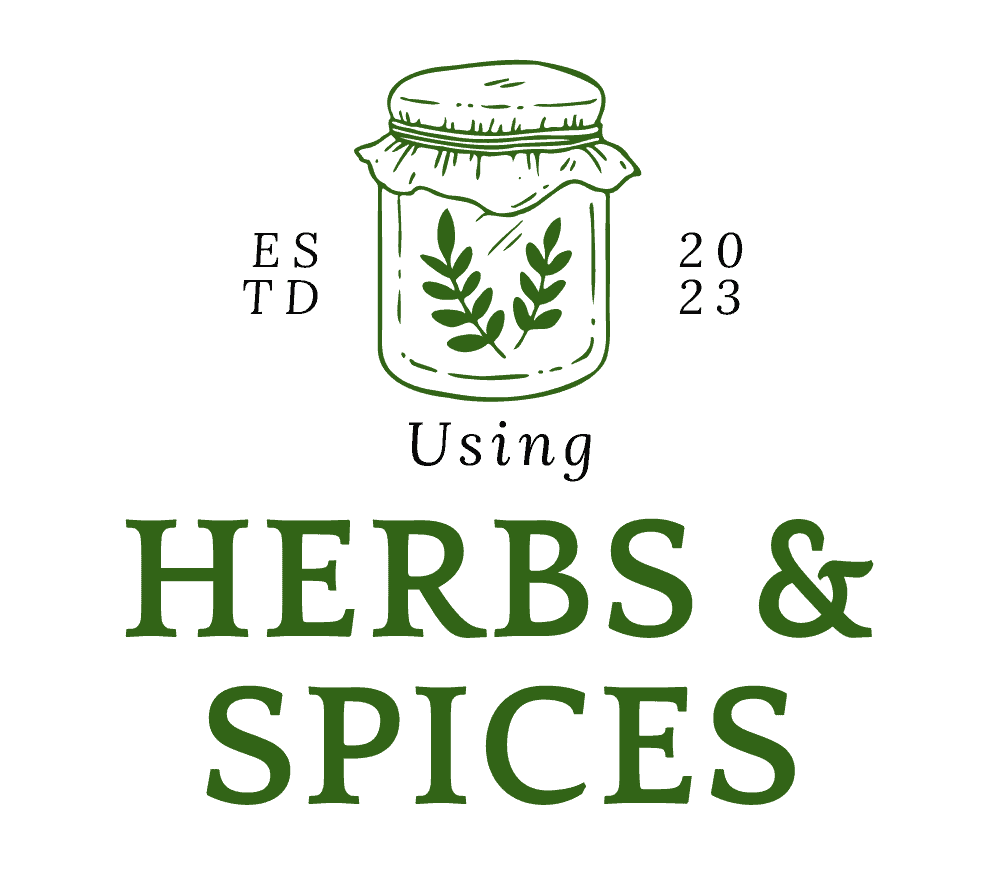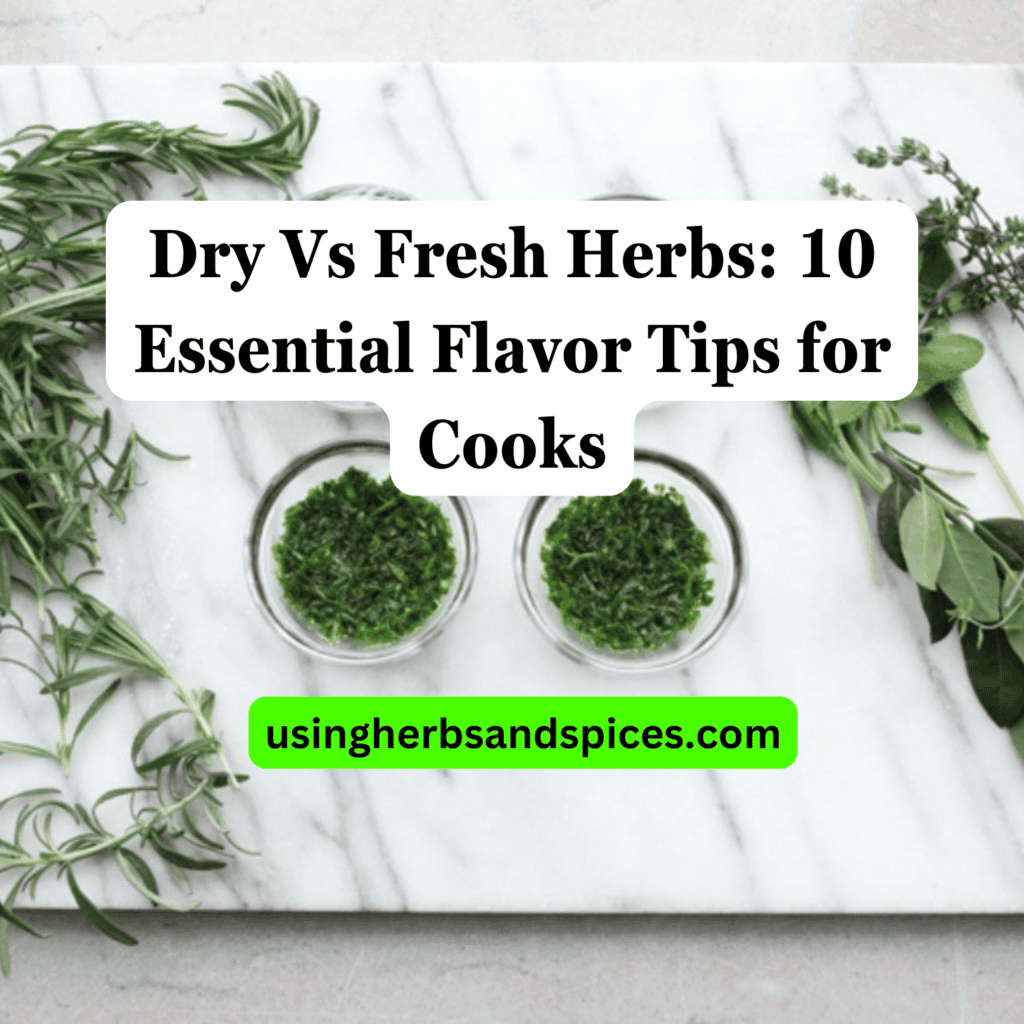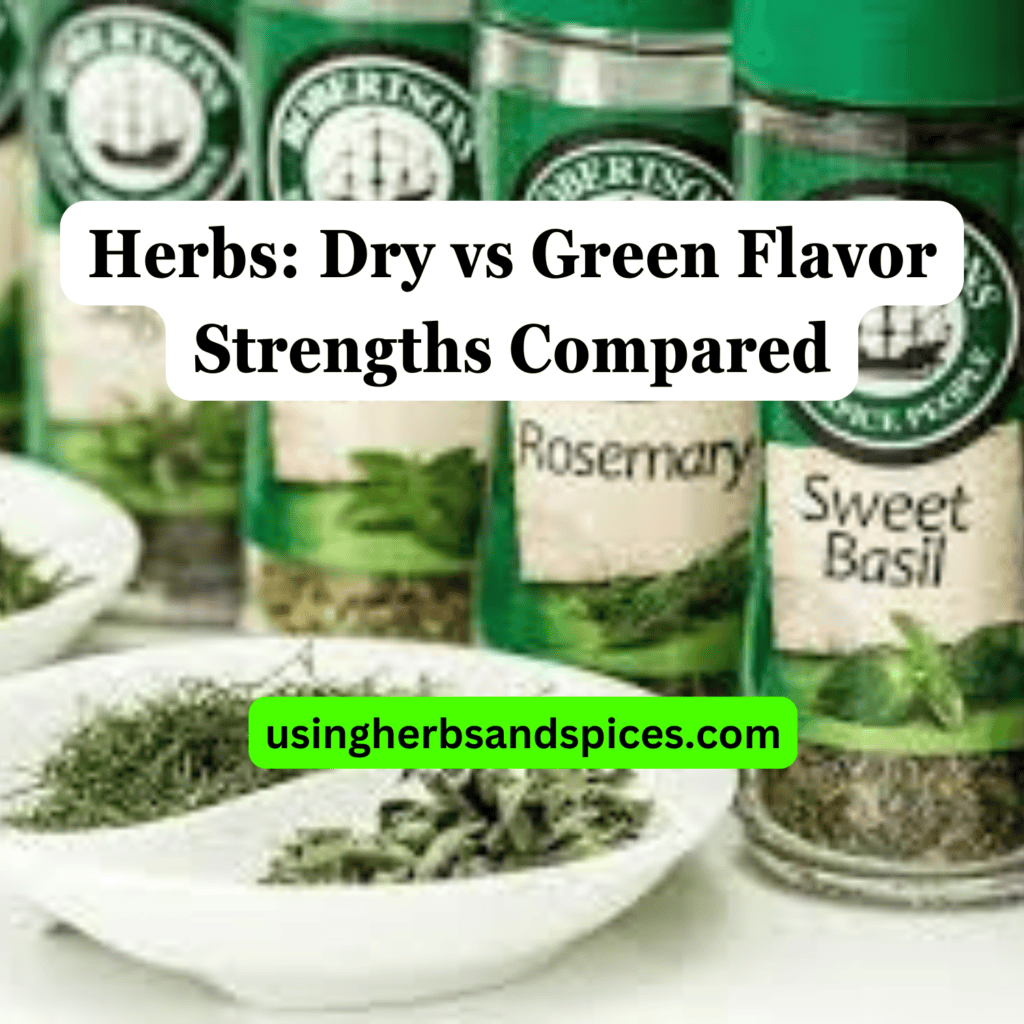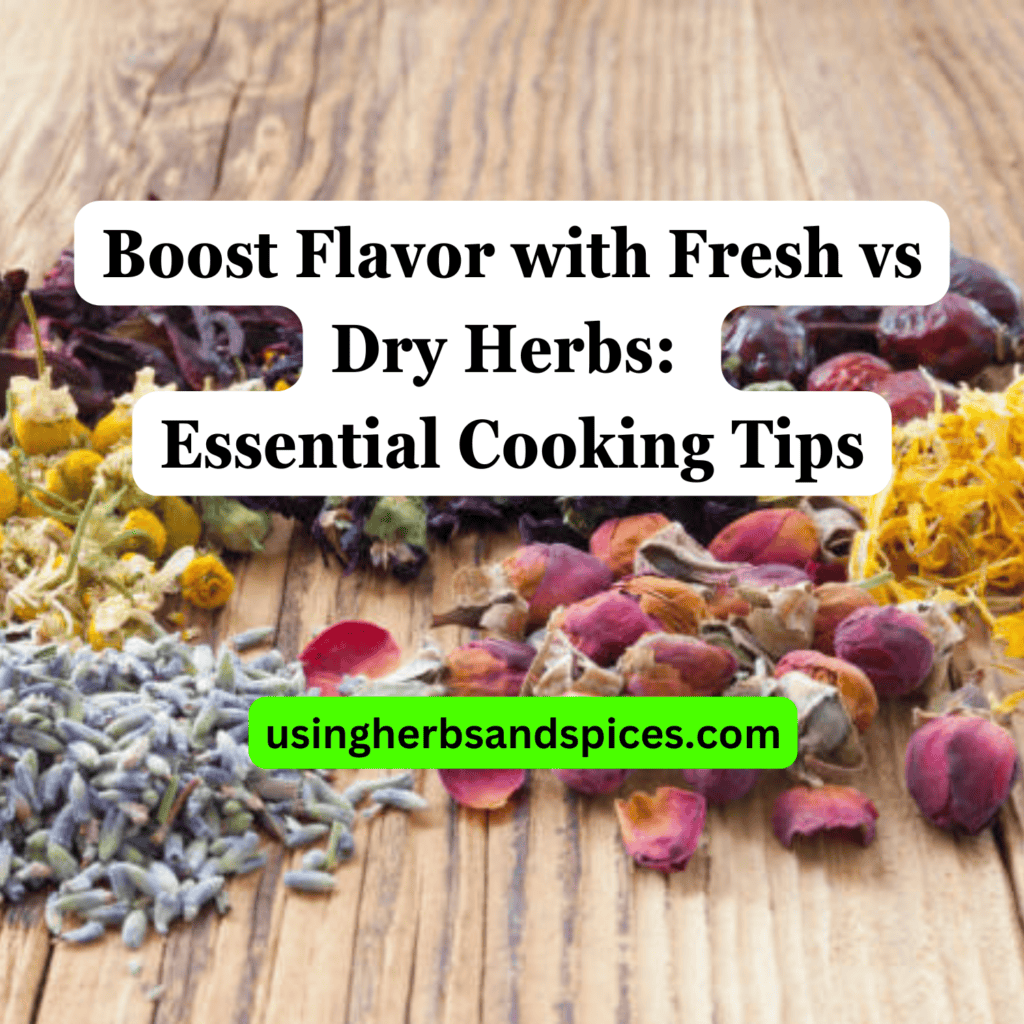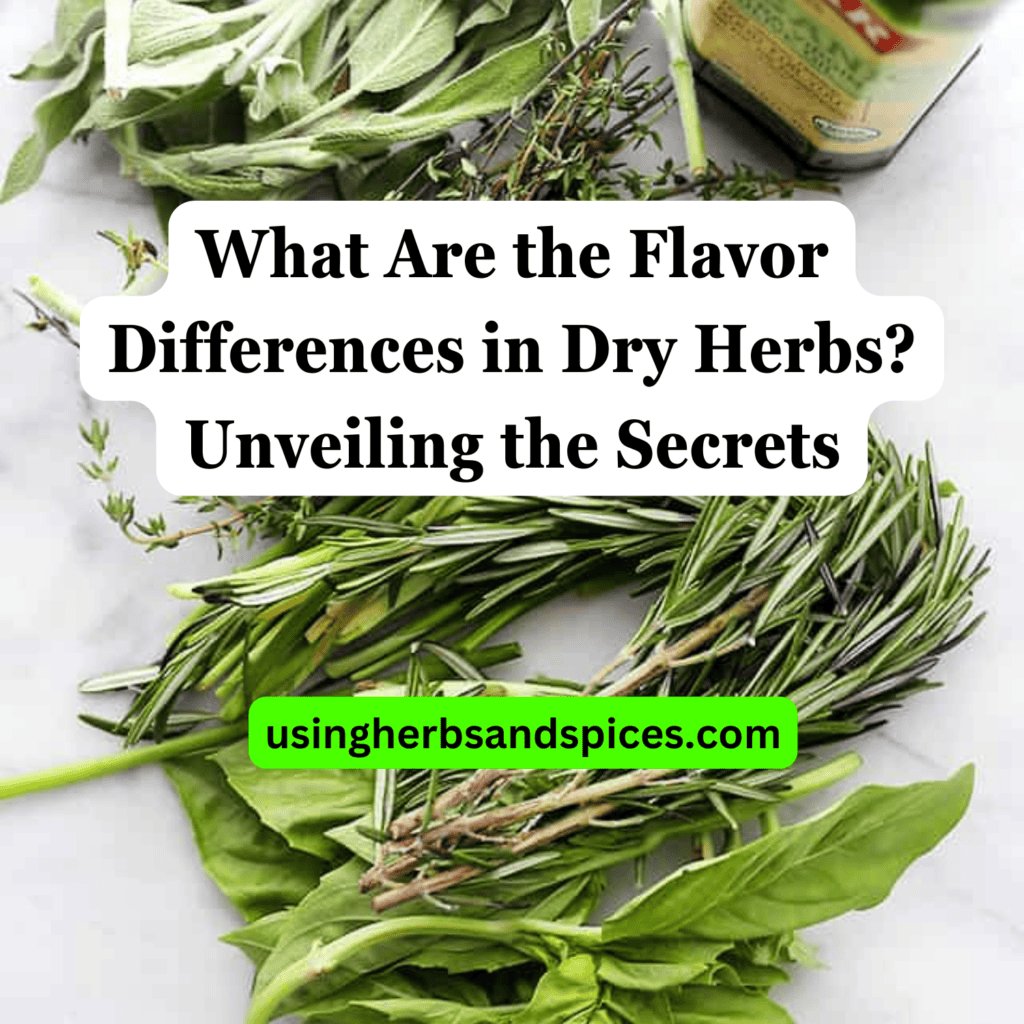SUMMARY: Fresh herbs bring vibrant flavors and are best used in dishes where their freshness can shine, while dried herbs offer concentrated tastes and are ideal for longer cooking times or when out of season. Knowing when to use each type can enhance your cooking with deep, nuanced flavors.
Struggling to decide between fresh and dry herbs for your cooking?

This guide will delve into the nuances of flavor potency and how it is influenced by the form of the herb used.
- The Essence of Freshness
- The Age of Drying: Preserving Flavors
- Comparative Analysis: Fresh Vs. Dry
- The Modern Kitchen: Reconciling Fresh and Dry
Continue reading to uncover the historical and practical perspectives on fresh versus dry herbs, helping you make informed choices in your culinary adventures.
The Essence of Freshness
Fresh herbs are like the lively spirit of a garden, bursting into a dish with vibrant flavors and aromas that are often lost in their dried counterparts. Their immediate impact is not just about the punch of flavor; it’s also about adding a burst of color and texture that can turn a simple dish into something extraordinary. Tradition and history have always favored the use of fresh herbs in cuisines that value brightness and depth, from the basil in a classic Italian pesto to the cilantro in a zesty Mexican salsa.
Fresh herbs have played a crucial role in both culinary and medicinal practices throughout history. Cultures across the world have long celebrated these plants for their distinct flavors and health benefits, incorporating them into recipes and remedies passed down through generations. Their potency in a fresh state has been believed to be more effective in not just enhancing food but also in their therapeutic properties, a wisdom that modern science often supports.
In the context of culinary history, fresh herbs have been the cornerstone of many traditional dishes, accentuating the natural flavors of ingredients without overpowering them. Their versatility allows them to be used in various forms – chopped, bruised, or whole – offering a sensory experience that dried herbs struggle to match. This section of the article aims to explore the essence of freshness and why it remains unparalleled in the culinary world.
The Age of Drying: Preserving Flavors
Throughout history, the technique of drying herbs has been a cornerstone in the preservation of flavor and aroma. Unlike fresh herbs, which can spoil rapidly, dried herbs offer longevity and versatility, making them invaluable in regions with distinct seasons or in times when fresh produce was scarce. The process of drying, whether through air, sun, or controlled temperature methods, systematically reduces the moisture content in herbs, concentrating their essential oils and flavor compounds.
The evolution of drying techniques reflects a blend of cultural wisdom and scientific advancement. In ancient times, communities relied on natural processes, hanging bunches of herbs in well-ventilated, shaded areas or spreading them under the sun. This not only ensured a steady supply of ingredients throughout the year but also played a crucial role in medicine, where precisely dried herbs were pivotal. As civilizations progressed, so did the methods, with innovations like dehydration machines offering controlled environments that maximized flavor preservation while minimizing spoilage risks.
The impact of drying on flavor is twofold. On one hand, it allows a more concentrated herb essence, which can imbue dishes with intense aromas and tastes even in small quantities. On the other hand, some delicate flavors can be diminished or transformed through the drying process, leading to a different culinary experience compared to their fresh counterparts. This nuanced preservation of flavors not only testifies to human ingenuity in food preparation but also highlights the changing dietary landscapes from ancient to modern times.
Comparative Analysis: Fresh Vs. Dry
The debate between fresh and dry herbs is not only about preference but also about the intensity and character of flavor they impart to a dish. Fresh herbs are often described as having a bright, lively flavor that can be somewhat delicate. They are best added towards the end of the cooking process or used raw to preserve their full aroma and taste. On the other hand, dry herbs, having lost their moisture content, offer a more concentrated flavor, necessitating a more measured approach in their use.
Scientific analysis reveals that the drying process alters the chemical composition of herbs. Essential oils, responsible for the aroma and flavor of herbs, are present in both fresh and dry forms but in varying degrees. While drying can lead to the loss of some volatile compounds, it also concentrates others, making dry herbs potent with a different profile compared to their fresh counterparts.
Historically, the preference for fresh versus dry herbs varied greatly across cultures, largely influenced by geographical location, climate, and the availability of certain herbs. In Mediterranean cooking, for example, fresh herbs have been a staple due to the region’s climate facilitating year-round growth. Conversely, in colder climates, where growing seasons were limited, drying was a practical method for preserving herbs, making dry herbs more prevalent in the culinary practices of these areas.
In conclusion, the choice between fresh and dry herbs cannot be simplified to a matter of potency alone. Instead, it requires consideration of the desired flavor profile, the specific application in cooking, and an understanding of how each herb transforms through drying. This comprehensive perspective allows for a more nuanced approach to using herbs, elevating culinary creations with their optimal flavor potential.
The Modern Kitchen: Reconciling Fresh and Dry
In the landscape of contemporary cuisine, the line between using fresh and dry herbs is increasingly blurred, with chefs and home cooks alike recognizing the unique contributions of each form to culinary creations. The modern kitchen, equipped with a global palette and an appreciation for both tradition and innovation, employs a strategic approach to selecting herbs that best suit the dish at hand.
One of the key factors in this selection process is the nature of the dish being prepared. Fresh herbs, with their vibrant color and aroma, are often chosen for their ability to enhance the presentation and sensory appeal of fresh salads, dressings, and light sauces. Their delicate flavors are best preserved and showcased in dishes that require minimal cooking. Conversely, dry herbs, known for their concentrated flavors and longer shelf life, are preferred in slow-cooked dishes, stews, and soups, where their complex flavors have time to meld and permeate the dish.
Moreover, the resurgence of interest in herb gardening, even in urban environments, has tipped the balance in favor of fresh herbs for many. The accessibility of growing one’s own herbs has made it easier for cooks to incorporate the crisp, nuanced flavors of fresh herbs into their daily cooking practices, fostering a deeper connection to the ingredients and their culinary heritage.
Ultimately, the choice between fresh and dry herbs in the modern kitchen is not a dichotomy but a dynamic spectrum. By understanding the distinct characteristics of each form, contemporary cooks can harness the full potential of herbs to enrich their culinary endeavors, marrying tradition and innovation on the plate. The decision is less about adhering to rigid culinary dogmas and more about adapting to the rhythms of nature, the demands of the dish, and the nuances of flavor that elevate a meal from the ordinary to the extraordinary.
Fresh vs. Dry Flavor Mastery
In this exploration of fresh versus dry herbs and their impact on flavor potency through history, we’ve unearthed invaluable insights for culinary enthusiasts and professionals alike.
- The vibrancy and immediate impact of fresh herbs elevate dishes with their bright, potent flavors, particularly when added towards the end of cooking or as a garnish.
- Dried herbs, with their concentrated flavors, are best utilized in dishes that cook for longer periods, allowing their complex tastes to infuse throughout.
- Historical practices have shown us the evolution of drying techniques, reflecting the necessity and ingenuity of preserving flavors across seasons and regions.
- A comparative analysis highlights that while fresh and dry herbs vary greatly in terms of flavor potency, their appropriate use depends heavily on the context of the dish and desired flavor profile.
- Modern culinary practices continue to reconcile the unique benefits of both fresh and dry herbs, with a noted resurgence in herb gardening offering cooks the best of both worlds.
Understanding the distinctive qualities and optimal uses of fresh versus dry herbs not only broadens our culinary toolkit but also connects us with historical culinary wisdom, enhancing our cooking with every pinch and sprinkle.
Fresh Vs Dry: Flavor Potency Through History FAQs
Which herbs are best used fresh rather than dry?
Fresh herbs that are best used rather than dried include delicate varieties such as basil, cilantro, and parsley, which tend to lose much of their vibrant flavor when dried. These herbs are most potent and flavorful when used fresh, adding a bright and aromatic touch to dishes that cannot be replicated by their dried counterparts.
How should dry herbs be stored for maximum flavor retention?
Dry herbs should be stored in airtight containers, away from direct sunlight and heat, to maximize flavor retention. Keeping them in a cool, dark place like a pantry or cupboard can significantly prolong their shelf life while preserving their aroma and potency. It’s also important to check periodically for signs of moisture to prevent mold growth.
Can you rejuvenate dry herbs?
While dry herbs cannot be completely rejuvenated to their original fresh state, you can enhance their flavor before use by lightly toasting them in a dry pan over low heat or rehydrating them in warm water for a few minutes. These methods can help revive some of the herbs’ essential oils, making them more aromatic and flavorful when added to dishes.
What’s the general rule of thumb for substituting fresh herbs with dry?
The general rule of thumb for substituting fresh herbs with dry is to use one-third the amount of dry herbs to fresh. Because drying concentrates the flavors of the herbs, less is required to achieve a comparable taste profile. However, adjustment to personal taste is recommended, as the potency of dried herbs can vary depending on age and quality.
